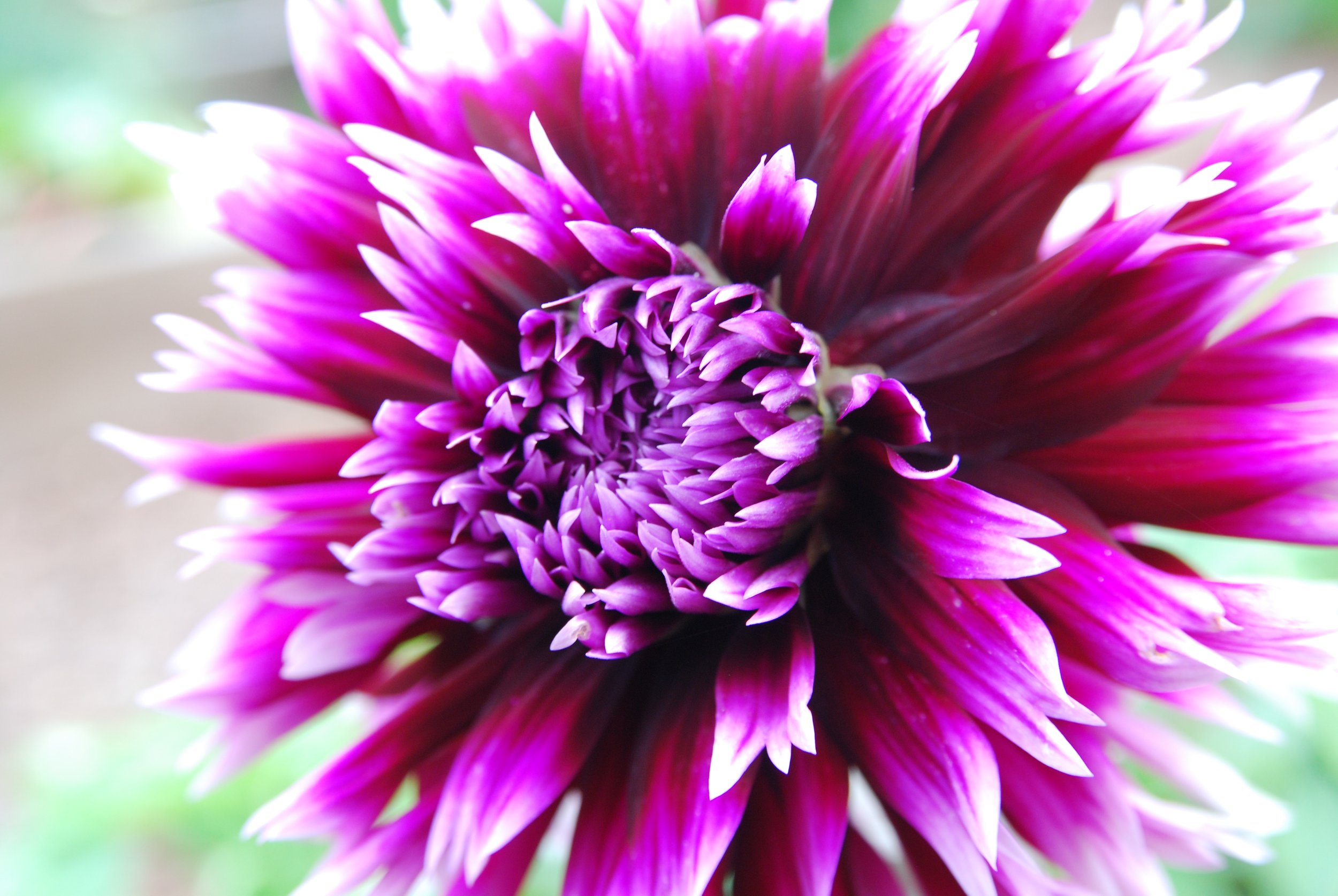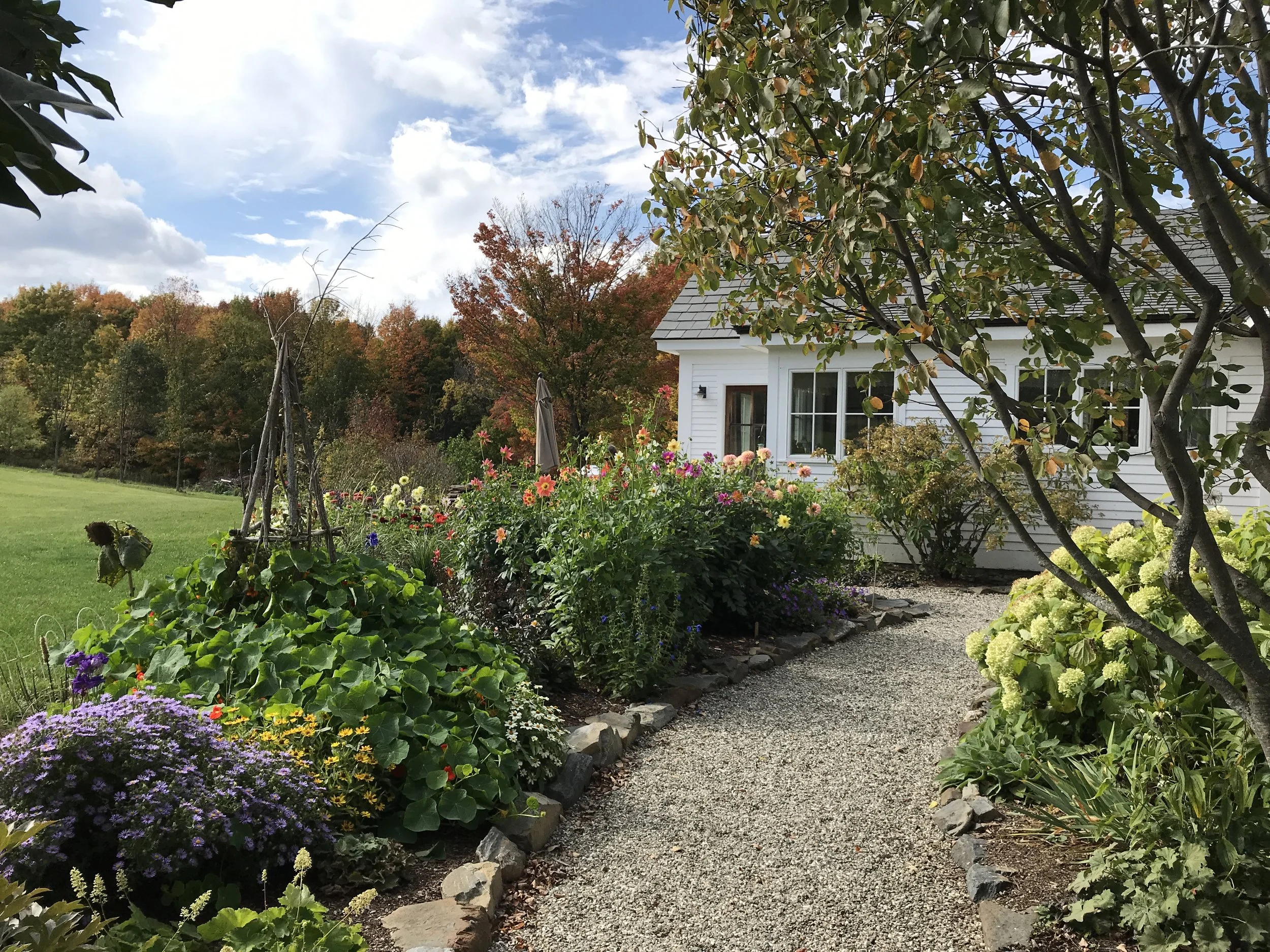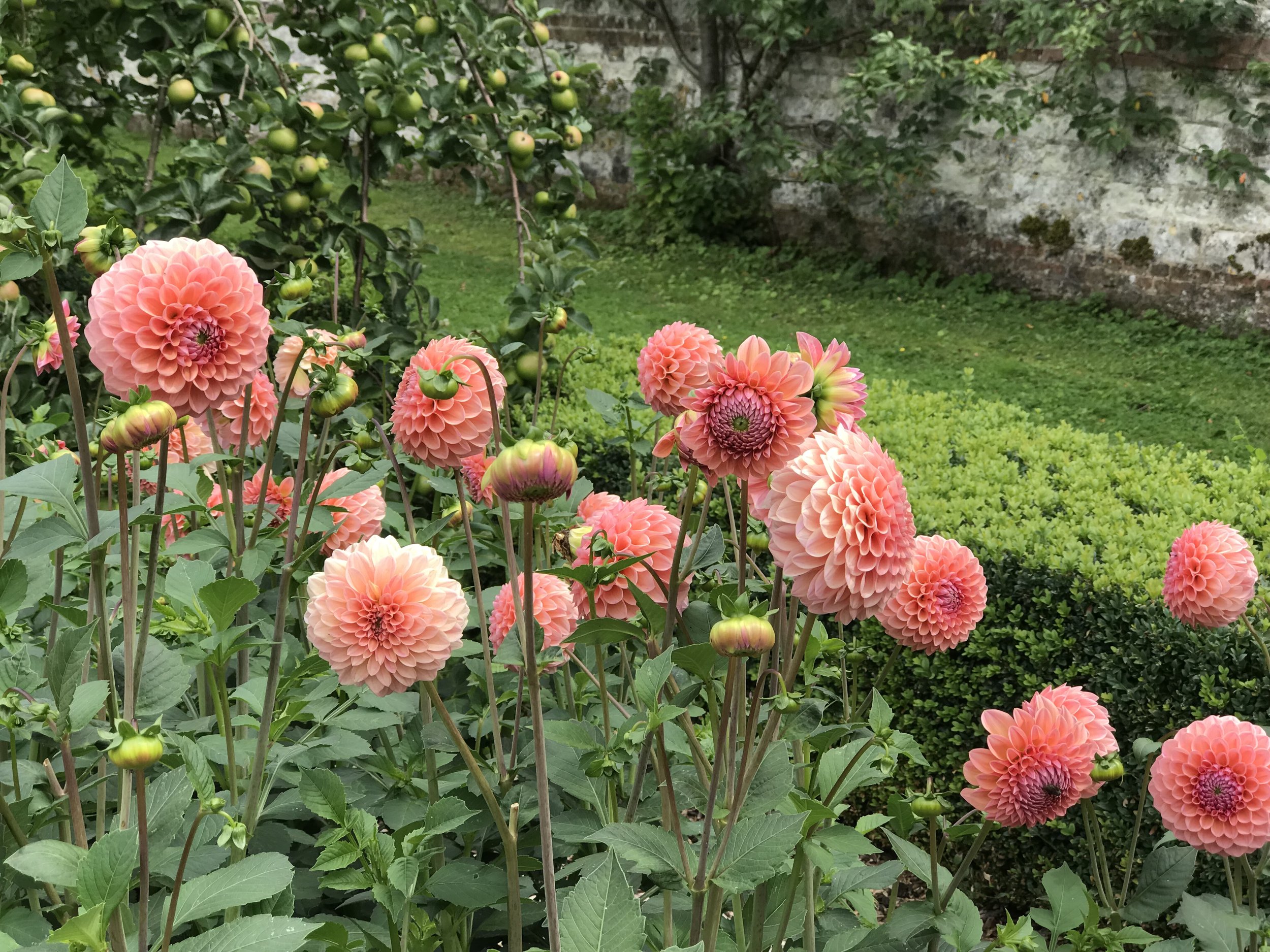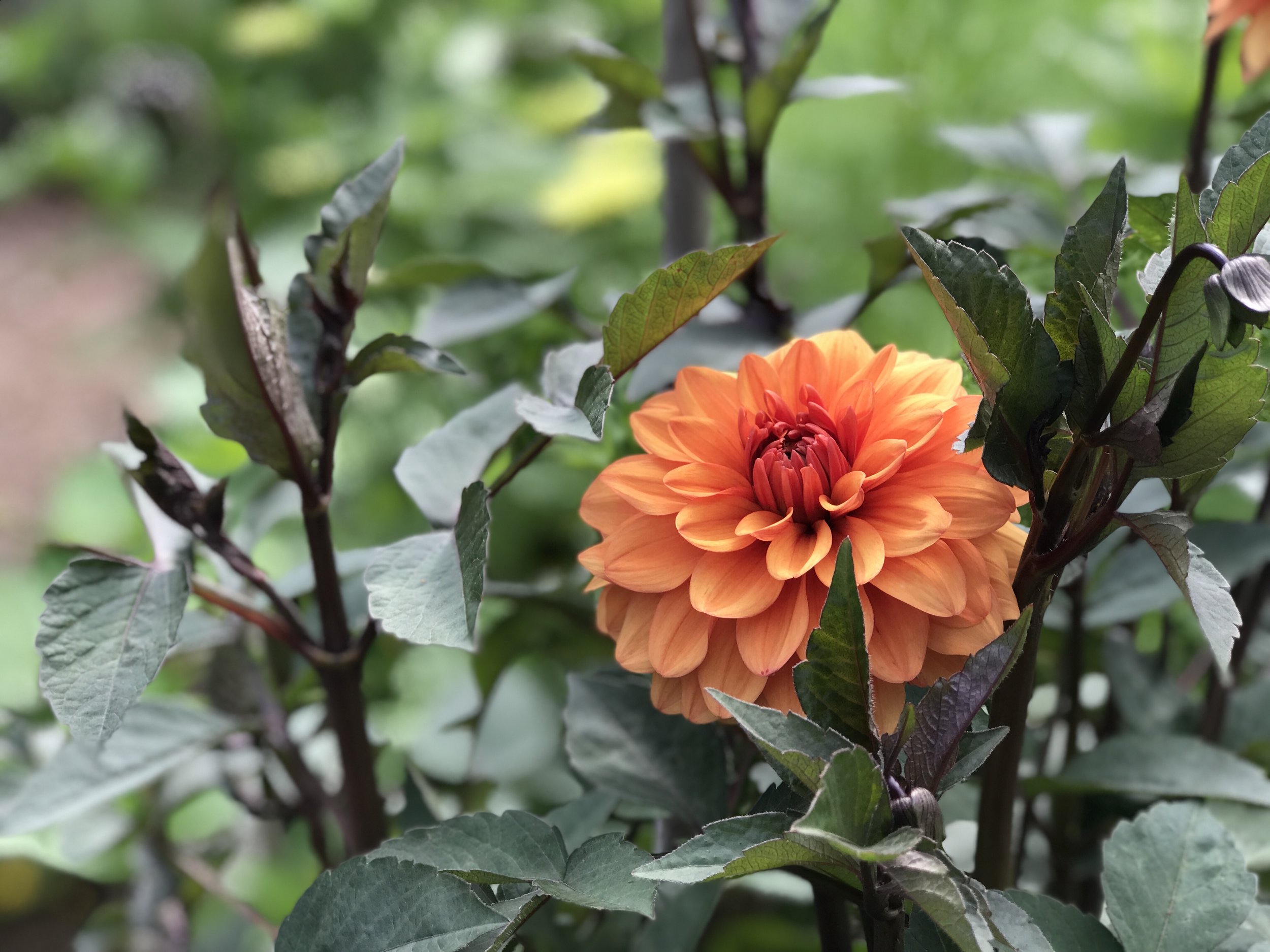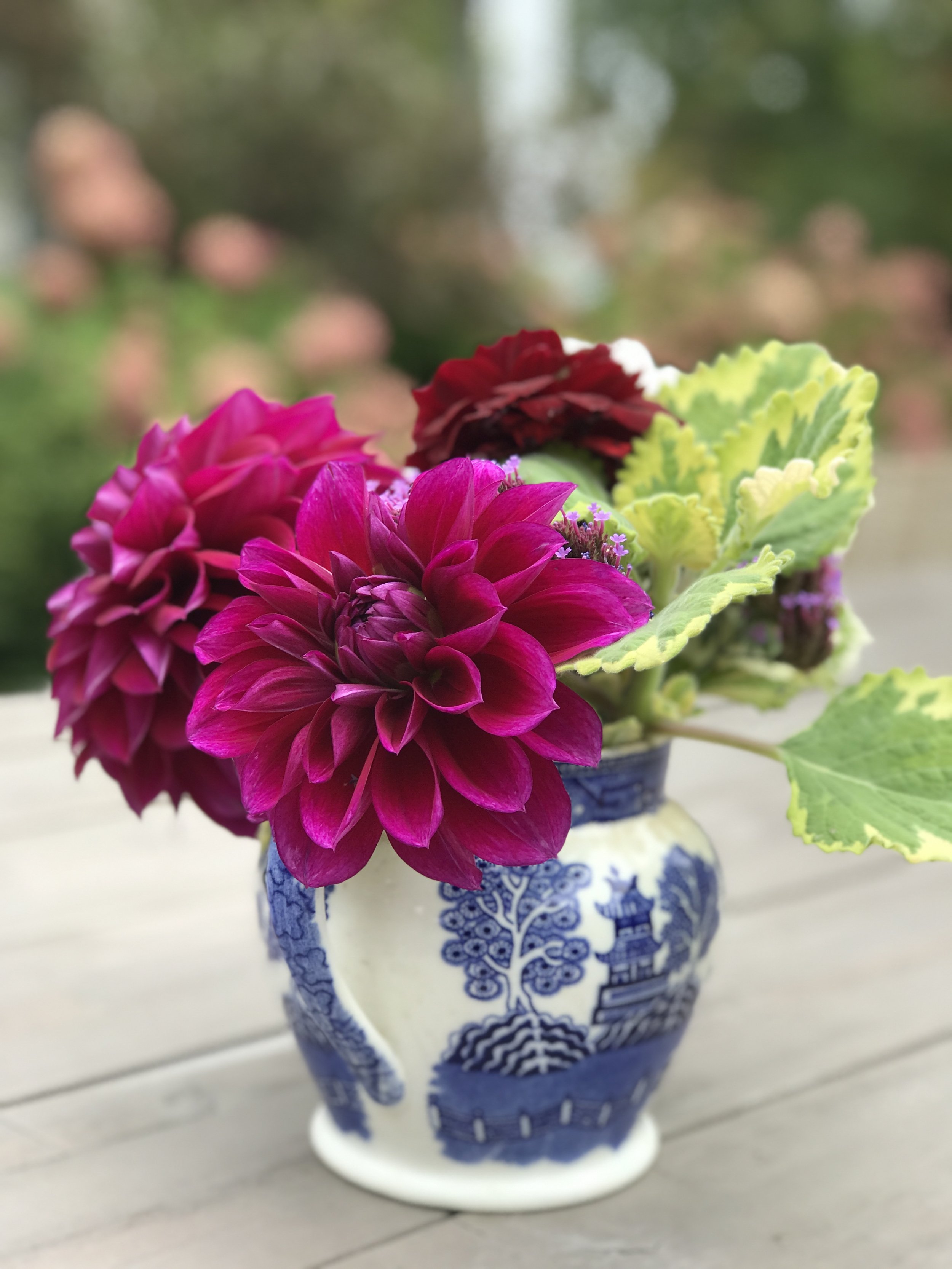I can’t remember when I first experimented with growing dahlias but it was love at first sight. Now I find myself making space to grow more each year. Once you’ve had success with growing your own you may be hooked too. The color range is unbelievable and they’re super fun.
Here’s one with white-tipped petals bleeding into fuscia and deep cherry (unknown variety). A wide range of types are available - cactus, pompom, dinnerplate, waterlily, dwarf, specialty and more with flower sizes ranging anywhere from 2 inches to 10 inches or more. Dahlias originate from Central America and are grown as annuals in cold climates. They must be dug up and stored in cool dry locations and replanted once the ground has warmed. They’re slow to flower but the show is worth the wait.
Below: Ruby hued petals unfold after a rain shower in mid-September. The flowers appear late in the season, usually starting in August, and will keep producing until hard frost. When staked they can withstand heavy downpours without breaking.
Smaller single types don’t require support and are best sited near the front of a border, along a walkway, or used in pots. I first encountered the unique variety below in the Seasonal Walk at the New York Botanical Garden and later found it online - it’s called Bashful - one of my favorites for its deep color saturation and prominent yellow center.
I ordered it from Swann Island Dahlias and grew it in my garden this year. Delicate 3-inch wide blooms are perfect for small arrangements like the one below which includes Purple Dome aster (Symphyotrichum novae-angliae ‘Purple Dome’, USDA zones 3-8) and a variegated geranium.
Bigger dahlias need support to prevent flopping or falling over (when you plant the tubers, put the stakes in at the same time to ensure you don’t damage the clump later on). Tomato cages work fine but you’ll need tall stakes for the really big ones. You’ll also need string or a ball of twine to corral the stems as the season progresses. One of my plants of unknown origin grew about 7’ tall and Emory Paul, a dinnerplate type with deep pink double flowers, easily topped 6’ and needed help staying upright - it’s huge!
Above and below: A flower garden I designed for a client who wanted a lot of color and an extended bloom period. Positioning the dahlias on the edge of the path made them accessible for cutting. Multiple varieties grown together create an eye-catching display along with zinnias, nasturtium, daisies and phlox. This photo was taken on October 6th last year so you can see how good dahlias look with a fall perennial like aster ‘October Skies’ (Symphyotrichum oblongifolius ‘October Skies’, USDA zones 5-8) as foliage begins to peak in the background.
Pompom dahlias are smaller and easy to grow. I just ordered some heirloom types in a range of peach, coral, pink, and orange from Old House Gardens in Ann Arbor, MI to trial next year.
Below: The Bishop of Llandaff is an heirloom dahlia with deep red flowers and very dark leaves. I found these growing in a greenhouse border at Highclere Castle in the UK while touring the gardens there in August of 2019. This is a showstopper plant for sure!
Dahlias are prolific bloomers, making them one of the top cut flowers. They do need careful siting however, requiring good drainage and full sun. Soggy wet soils will lead to tuber rot. You can grow in containers too. Tubers are widely available; you’ll want to buy in late summer or early fall to be sure the ones you love are in stock. Shipment begins the following spring depending on where you live.
Ask your friends for divisions. I have several that came from other gardens and I share too; a single tuber will multiply underground during the growing season with fleshy roots that resemble a strange-looking octopus. Each clump can yield several new plants which originate from a growing tip called an eye. The eyes are what you look for when you’re wielding a sharp knife, cutting the clump into pieces to replant.
Every winter my basement holds several cardboard boxes of labelled dahlias stored in moist wood shavings which get opened in early May and divided into usable tubers with eyes (there are loads of resources available to learn how to dig, divide and store dahlias); divisions are then planted in early June when soil temperatures have warmed up in my northern Vermont garden.
All kinds of bees forage among the plants; as the weather cools they lose momentum and appear frozen on the nectar source, moving in slow motion as the sun wanes. Then the frost comes and the show is over with plants turning into a sodden black heap.
Below: This season I tried several new types. Loved this orange beauty called David Howard which has burgundy leaves and stems like the Bishop (foliage is great for adding depth to arrangements). I ordered it from White Flower Farm.
Below: This gorgeous one is called Creme de Cassis.
Below: Bride to Be is a classic white waterlily type that can cool down hot colors.
Cut plants (deadhead) to keep them producing. A couple dahlias and zinnias make a quick bouquet and always bring a smile when you give them away. Erin Benzakein’s latest book is a great resource - Discovering Dahlias: A Guide to Growing and Arranging Magnificent Blooms, available on the Floret Farm website or from your local bookstore. I put it on my holiday wishlist!

